I am a Staff Scientist at the Observatories of the Carnegie Institution for Science. My research program is focused on understanding the nature of dark matter and the process of galaxy formation, with a particular emphasis on formulating a coherent picture of the many different aspects of these problems. I have developed a model of dark matter and galaxy formation physics, Galacticus, which is available to the community as an open source project. The approach blends both analytic understanding and significant number-crunching utilizing in-house and external compute clusters.
You can find a list of all of my publications here.
Contact me at abenson@carnegiescience.edu.
Research
You can learn more about current and former members of my research team here.
Dark Matter
Building Constrained Merger Trees
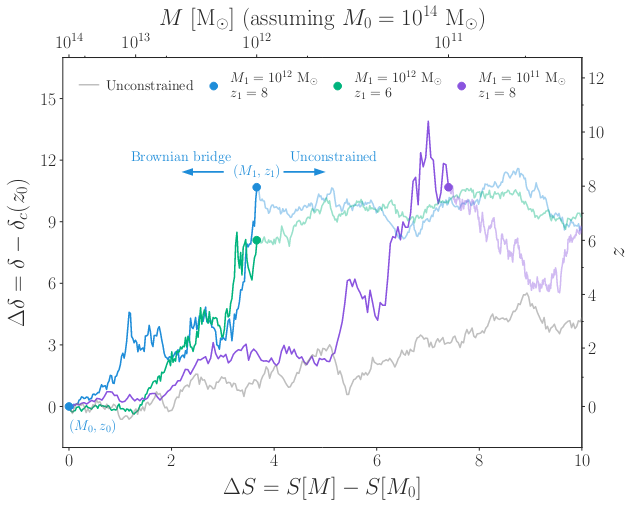
Examples of “Brownian bridge excursions” realized using the methods developed by Nadler, AJB, et al. (2023, MNRAS, 639). This stochastic process allows us to construct merger trees describing the assembly of dark matter halos which automatically satisfy certain constraints - such as a Milky Way halo that is guaranteed to always contain an LMC.
Universal Gravothermal Solutions for SIDM Halos

If dark matter particles can undergo elastic scattering from each other (so-called “self interacting dark matter”, SIDM) then dark matter halos are subject to the gravothermal instability, resulting in a runaway process of core-collapse. In Yang, AJB, et al. (2022, MNRAS in press) we develop a universal saling solution for the gravothermal evolution of SIDM dark matter halos and demonstrate that it agrees well with numerical results while being many orders of magnitude faster - opening up the possibility of detailed studies of SIDM model parameter spaces.
Tidal Tracks for Dark Matter Subhalos

Dark matter subhalos are modified by tidal forces as they orbit within the gravitational potential of their host halos. This has important consequences for their detectability as tidal heating changes their density profiles. It has long been know that the density evolution of subhalos follows a universal “tidal track”. In AJB & Du (2022, MNRAS, 517, 1398) we develop a simple, semi-analytic model for this evolution and demonstrate that it can reproduce the results of high resolution N-body simulations with excellent accuracy.
Constraining the Particle Mass of Warm Dark Matter
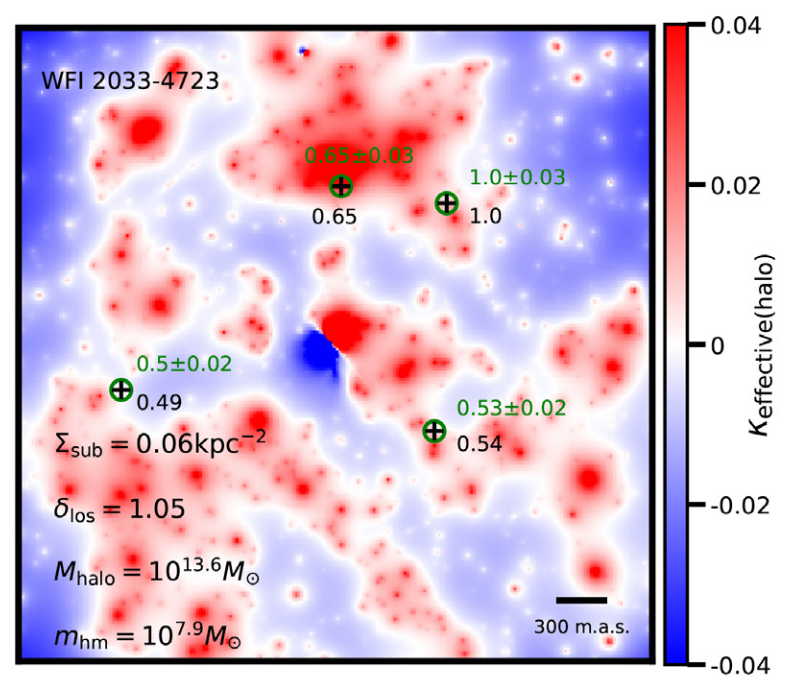
A model realization of the gravitational lensing convergence field around the observed gravitational quad-lens system WFI
2033-4723. Tens of millions of such realizations were generated to quantify how frequently different masses of warm dark matter
particle would produce gravitational lensing magnifications similar to those observed. From Gilman, AJB, et al. (2020, MNRAS,
491, 6077).
Suppresion of Dark Matter Halo Growth by Baryons
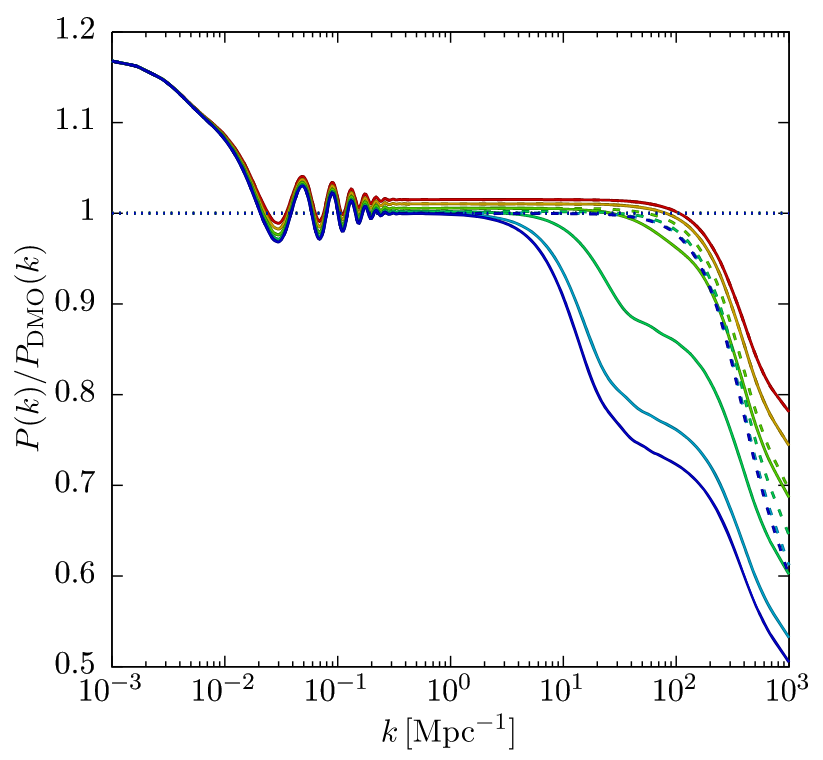
The power spectrum of matter in a universe containing both baryons and dark matter, relative to that in a pure dark matter
universe. These calculations are being used to quantify how baryons reduce the number of low mass dark matter halos that form - a
crucial input to observational programs which aim to measure the nature of dark matter. From Benson (2020, MNRAS, 493,
1268).
Galaxies
Modeling the Milky Way’s Dwarf Galaxies
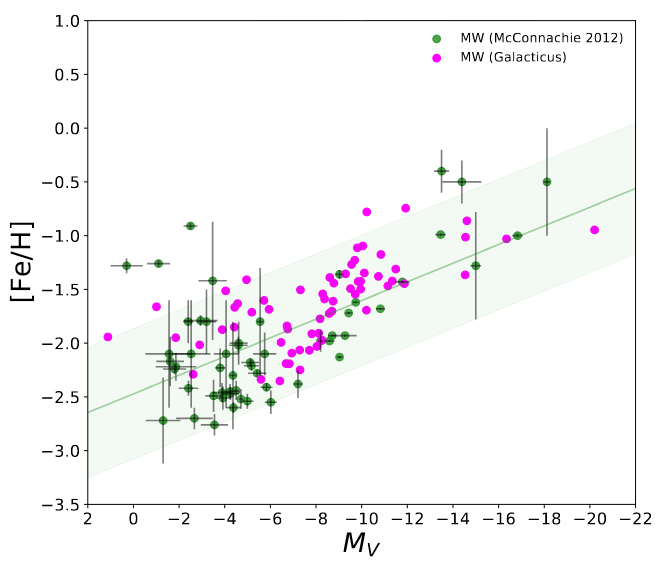
The mass-metallicity relation for Milky Way dwarf satellites as predicted by Weerasooriya, AJB, et al. (2022, ApJ in press) using the Galacticus model (meganta points). Results are compared to observations (green points) and found to be in good agreement. Modeling the mass-metallicity relation provides strong constraints on the nature of feedback and outflows in the Galacticus galaxy formation model.
Dust Extinction Curves for Galaxies
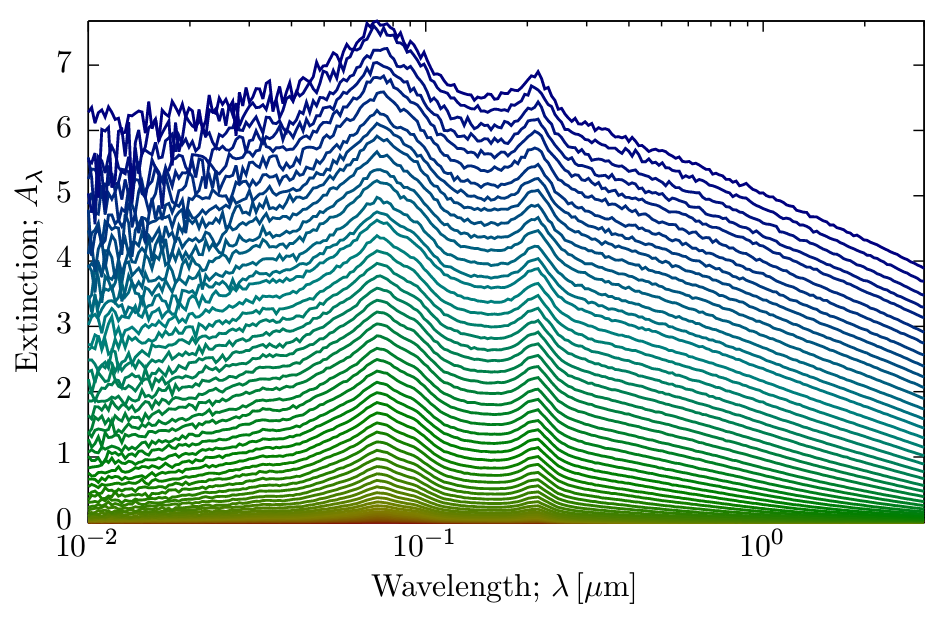
The extinction as a function of wavelength caused by dust in a suite of model galaxies. Understanding how dust absorbs starlight
is an input ingredient in the construction of simulated surveys for future telescopes. The extinction curves shown were computed
using a Monte Carlo radiative transfer code. From Benson (2018, RNAAS, 2,
188).
Emission Line Galaxy Survey Predictions for the Roman Space Telescope
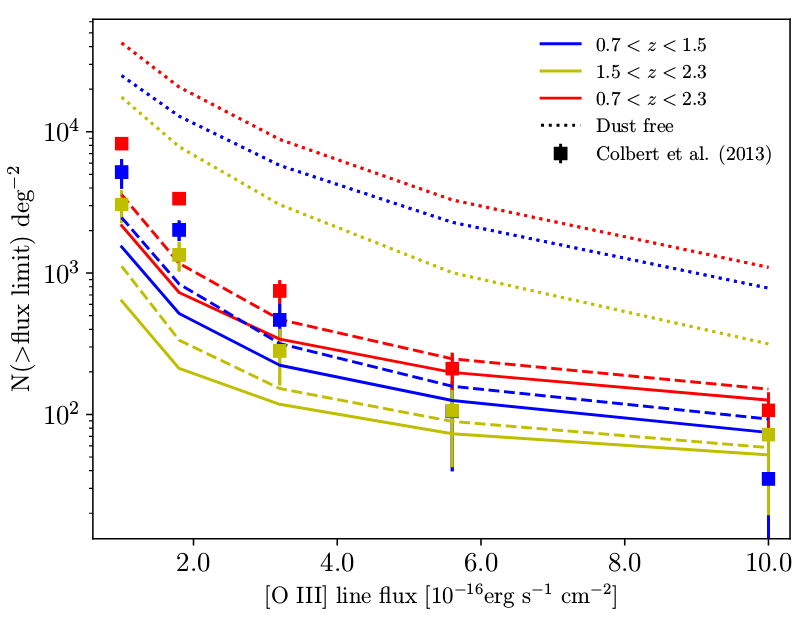
Predictions for the number of [O II] emission line galaxies from the Galacticus model compared with observational data. Galacticus is being used to build synthetic surveys of emission line galaxies for the Roman Space Telescope. From Zhai, AJB, et al. (2019; MNRAS; 490; 3667).
Synthetic Skies for the Legacy Survey of Space and Time on the Rubin Observatory

The distribution of galaxy colors from a synthetic survey built for the Legacy Survey of Space and Time on the Rubin Observatory using the Galacticus model. From Korytov et al. (2019; ApJS; 245; 26).